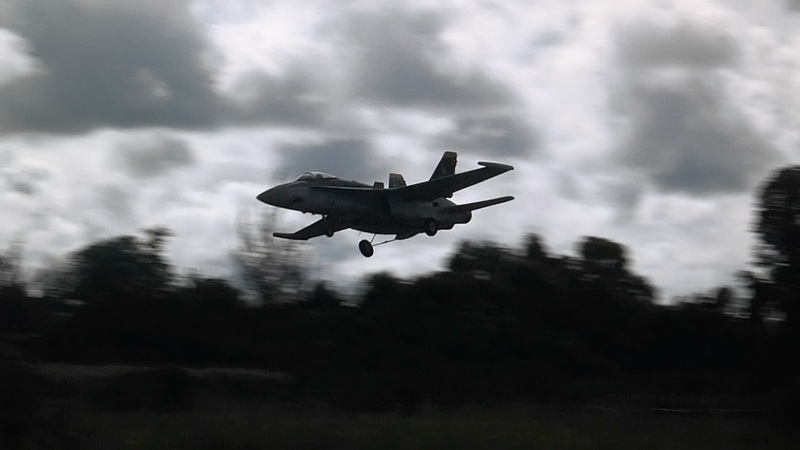
About
Zooooommmmm!!! Swwossshhhhh!!!...the sound of terrifying miniature size military air power in style! If you're an R/C model flying enthusiast then owning a Jet plane is a must to complete the missing puzzle of being an R/C flying enthusiast. Just like beginners who prefer a CESSNA, a scale flyer to a P-51D Mustang its obvious for a jet enthusiasts to inherit an EDF class jet if a fuel turbine is out of reach. For today R/C hobbyist the F/A-18 HORNET is definitely top 5 'must have' list for anyone to have in their hangar collection. This jet plane always been a 'benchmark' for being part of the military jet culture.....well of course don't forget the F-14 TOMCAT but that comes with hefty price tag though. If you own this you've probably 'assume' you're already on top of the food chain because 'Tom Cruise' has been there (*did i hear the Danger Zone song in the background?). Let's move away from the '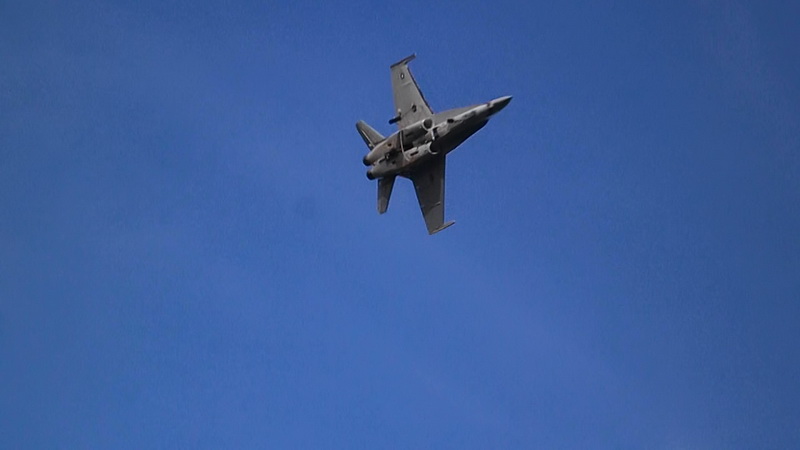 back alley kitty' for a while and lets talk about the flying stinger..the HORNET!
back alley kitty' for a while and lets talk about the flying stinger..the HORNET!
Not all jet planes are build to perform the same as others particularly the one i've owned 9 years back; its the HOBBY KING branded F/A-18 HORNET solely sold at Hobbyking.com website. Its was the first jet i fall in love in, a single unit electric EDF class R/C airplanes. My choice getting this plane was because it was the cheapest to own under USD$70 budget; good looking with livery design close to the "JOLLY ROGER" theme very close to what used to be livery theme on F-14 TOMCAT. At the same time i can re-use back my existing 11.1v 3s 2200mah li-po battery pack which i have plenty for flying my 450 sized helicopter which also dictates my current choice. Default battery requirement on this plane was suppose to be smaller than 2200mah but after researching via R/C community forum it can be modified to accommodate much bigger pack by extending the battery bay through shredding chunks of foam to enlarge the cavity. Like many planes that i've owned for 9 years this plane never fail to impress me with its awesome maneuverability, cool stunts and simply a head turner for those who saw it...its like for something less i pay i get more fun!....unfortunately some of my jet models are opposite of that especially the bigger ones, lol Most importantly coming back home after few round on my F-18 i can held heads high and a huge smile knowing i've done an impressive flight maneuver thanks to my skills....yeah! got them all recorded on my video collection for nostalgic safe keeping....that pride being a jet pilot...hehehe! Fun.. its all about fun!

Specification (as describe by vendor/manufacturer)
Brand name: HOBBY KING (re-branded from original ART-TECH brand)
Model name: F/A-18 HORNET
Release date: Approximately 2009
Height: 257mm
Ideal battery pack: 11.1v 3s 1300mah 20C Li-po battery (Not Included)
Max battery pack (with compartment modification): 11.1v 3s 2200mah 35~40C Li-po battery (Not Included)
Average flight time (normal cruise flight): 5~6 minutes
Fuselage + wing material build: EPS foam (Expanded Polystyrene)
Includes:
+ Full photo manual
+ Assembly tools
Requires:
- Your Own 4~6 Channel TX/RX radio unit
- 11.1v 3s 1300mah 20C Li-po battery or 11.1v 3s 2200mah 35~40C Li-po battery
Flight level/piloting experience requirement:
+ Piloting level: Advance
+ Minimum past model experience: Flying at least a trainer or a glider.
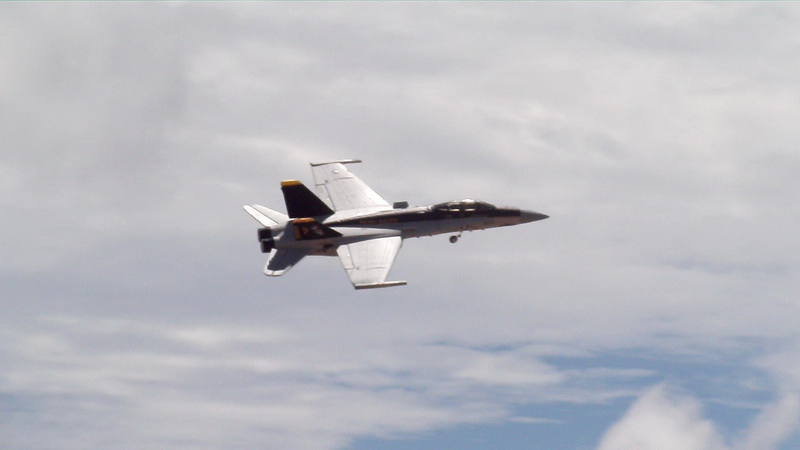
|
Pros:
|
Cons:
|
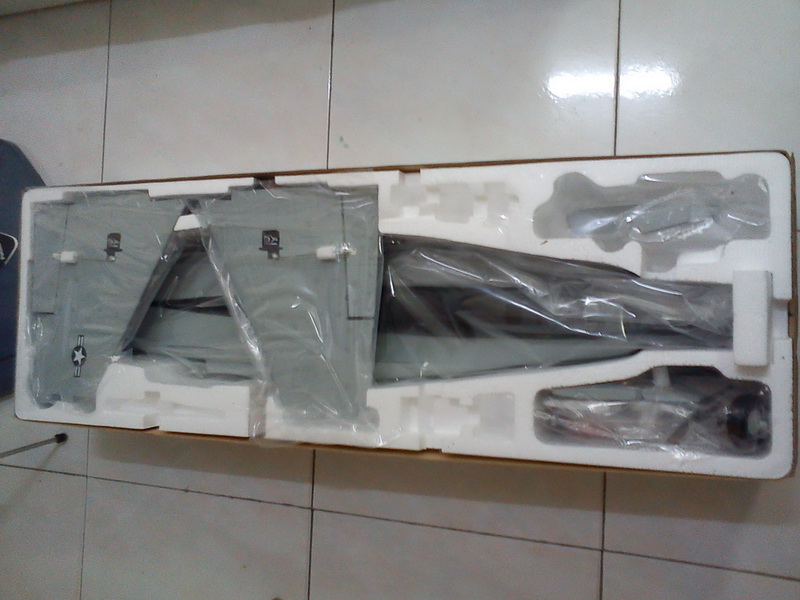
Quality and builds
Since i bought it as new package it comes as PNF (Plug-N-Fly) model which means you just need to supply basic radio combos and battery and that's it. The only simple last thing i need to do is basic assembly by attaching wings, tails and landing gears to complete as whole. To my amaze unlike many planes this HK's F/A-18 jet doesn't have build-in wing spar like most planes which usually have inserted long solid lightweight carbon fiber rods/skewer like to reinforce the strength along the wing span under side. This spar-less foam wings need to be attached to the side of the fuselage via supplied epoxy glue (but i used hot glue instead). Same attachment work goes to the rear tail and vertical stabilizer. Others such as landing gear just needed snap-in under the bellow via plastic sockets and reinforced screws for the front steering wheel. Overall aero foil design around the wings are almost flat profile NACA style, its looks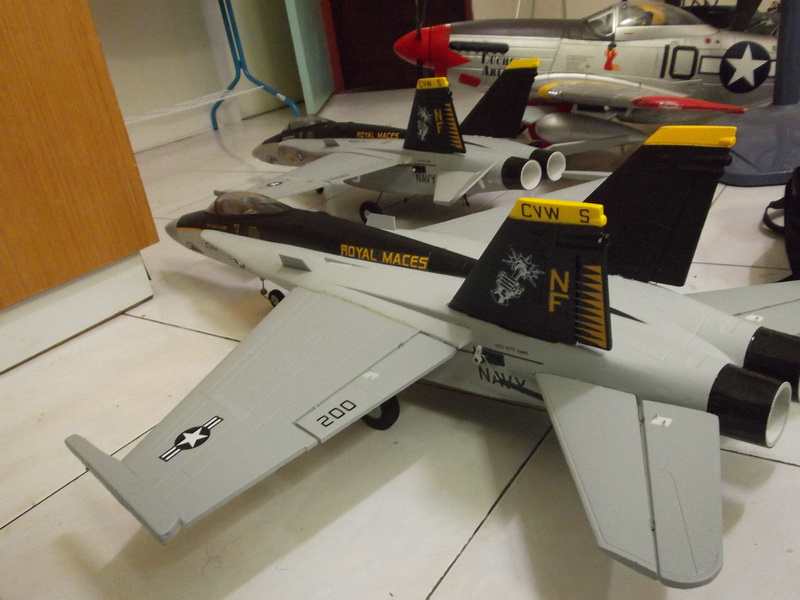 and feel very 'flat plank' close to what i can find on generic aerobatic planes Having the weight of the plane being just around at phenomenal 640 grams i can predict that this plane should have no problem flying without weight struggle since most EDF plane of similar size are usually heavier than that. The whole plane kit was build from molded EPS foam material which is known to be lightest and most rigid material ideal for creating lightweight performance flight and aerobatic capabilities which share similar build and flying traits as my HK's A-10, ART-TECH Pitts Special (FPV build), ART-TECH P-51D Mustang (FPV build) and others which is too handful for me to note down the list....yeah! i have too many planes in my collection. Among all fleets of my EDF jet this F/A-18 model definitely the most lightest in its class but also most fragile since the fuselage structure such as cockpit wall, nose cone, ventilation duct toward the EDF unit and few parts of the plane seems to have thin wall slightly less beefy than the my A-10 or any typical foamy EDF jet. Subsequently as i try to gently push the rear part of the plane plane downwards with my bare hands the rear flexible steel landing gear when bowed the foamy base support where the rear landing gear attached below the fuselage seems to compress and never recovered back to its original shape unlike elastic EPO foam. So i had to be careful when trying to land this plane not to squash the rear landing gear too much. Even a slight nick on the fuselage surface with my finger nail easily create small unrecoverable dents/scratches...there's nothing i can do about it neither hot water cure could help it because that's the default characteristic of an EPS foam as mention before in my HK's A-10 review articles. Most fragile easily deformed parts is the front fuselage nose which is made from ultra thin yet brittle plastic Lexan molded nose cone. I've ordered a spare $3 nose cone for this jet under ART-TECH brand just in case if 'shit' happens and found out this part are 100% identical with HobbyKing version which confirm this model in hand was an ART-TECH's F/A-18 before it was re-labelled. Speaking about rear thin steel landing gear that also can be an issue because these landing gear are very flimsy and tends to 'bow legged' as it land on its rear causing two left and right separate apart which then ground started to hit the belly of the plane, to fixed the problem i've uses two long strips of zip ties to hold both wheels in places so that the landing arch does bow apart from bending. Subsequently the zip ties fix doesn't look good 'visually' in the air but it does it job well to mitigate the issues.
and feel very 'flat plank' close to what i can find on generic aerobatic planes Having the weight of the plane being just around at phenomenal 640 grams i can predict that this plane should have no problem flying without weight struggle since most EDF plane of similar size are usually heavier than that. The whole plane kit was build from molded EPS foam material which is known to be lightest and most rigid material ideal for creating lightweight performance flight and aerobatic capabilities which share similar build and flying traits as my HK's A-10, ART-TECH Pitts Special (FPV build), ART-TECH P-51D Mustang (FPV build) and others which is too handful for me to note down the list....yeah! i have too many planes in my collection. Among all fleets of my EDF jet this F/A-18 model definitely the most lightest in its class but also most fragile since the fuselage structure such as cockpit wall, nose cone, ventilation duct toward the EDF unit and few parts of the plane seems to have thin wall slightly less beefy than the my A-10 or any typical foamy EDF jet. Subsequently as i try to gently push the rear part of the plane plane downwards with my bare hands the rear flexible steel landing gear when bowed the foamy base support where the rear landing gear attached below the fuselage seems to compress and never recovered back to its original shape unlike elastic EPO foam. So i had to be careful when trying to land this plane not to squash the rear landing gear too much. Even a slight nick on the fuselage surface with my finger nail easily create small unrecoverable dents/scratches...there's nothing i can do about it neither hot water cure could help it because that's the default characteristic of an EPS foam as mention before in my HK's A-10 review articles. Most fragile easily deformed parts is the front fuselage nose which is made from ultra thin yet brittle plastic Lexan molded nose cone. I've ordered a spare $3 nose cone for this jet under ART-TECH brand just in case if 'shit' happens and found out this part are 100% identical with HobbyKing version which confirm this model in hand was an ART-TECH's F/A-18 before it was re-labelled. Speaking about rear thin steel landing gear that also can be an issue because these landing gear are very flimsy and tends to 'bow legged' as it land on its rear causing two left and right separate apart which then ground started to hit the belly of the plane, to fixed the problem i've uses two long strips of zip ties to hold both wheels in places so that the landing arch does bow apart from bending. Subsequently the zip ties fix doesn't look good 'visually' in the air but it does it job well to mitigate the issues.

As for the looks this plane does not have sharp aesthetic details or should i say it has 'blunt' aesthetic compare to more expensive EDF jet planes like the ones made from FMS or LANXIANG brands. Some more it doesn't have working wheel retract to hide the wheel inside the fuselage, so flying with wheel dangling around can be a bit intimidating and annoying to look at especially for pure scaler enthusiast who enjoying the presences of realistic appearance of aircraft in the air. I can't complaint much for a $70 jet plane, what matter the most is how it flies. My worries is how much does a stock power EDF unit perform since majority out of box EDF plane during this era (circa 2008~2012) have sub par thrust power which force many EDF owner to upgrade immediately both their ESC and EDF hardware unit after their first maiden. As for the electronics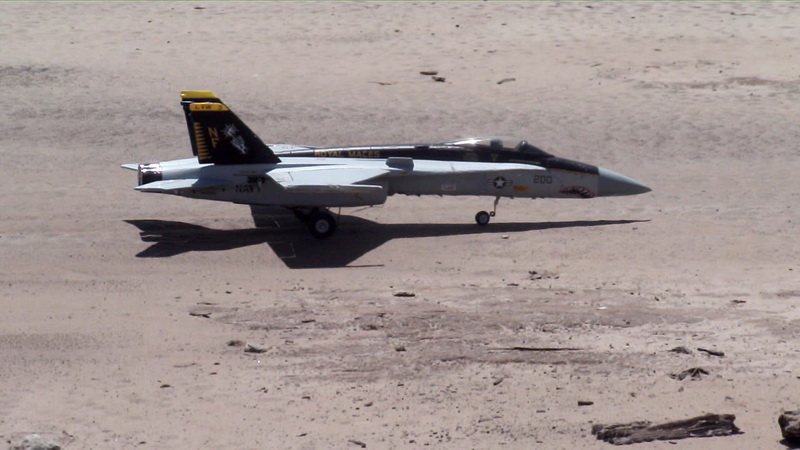 it came with 5x standard 9g plastic analogue servos, 30A ESC with internal 5V/2A rated BEC, B2025 Brushless Inrunner (4300KV) motor to spin 6 blade plastic prop around 65mm sized EDF duct. All onboard servos are use to control basic function such as 1x servo per-aileron on each side of the wings (2x), 2x servo for elevator and 1x servo for front wheel landing gear steering. Commonly there's no servo for rear rudder control flight surface because most fast maneuvering EDF jet relies on 'Banks and Yank' to turn and yaw the plane around especially for a park flier size EDF jets. For the radio unit i'm just like most of my older plane i'm using the classic TURNIGY 9X radio with FRSKY DJT 2.4Ghz transmitter module with FRSKY 8 channel receiver with RSSI telemetry support unit for extra reliability and TURNIGY classic blue pack 11.1v 3s 2200mah 35~40C battery pack (12.6v when fully charged) similar battery pack used on my 450 size helicopter and on other warbirds. As mentioned before during the into the battery bay cavity have to be enlarge by shedding few extra foam to accommodate a 3s 2200mah 35~40C li-po. The extra weight of the battery has minor impact on the plane performance regardless the manufacturer recommended battery. Total flight control only uses 4 channel from radio receiver; aileron, elevator, steering and throttle. As for the flight control setup; no dual rate just full throw 100% rate all the time, 50% lower sensitivity to EXPO on both aileron and elevator. Only ground steering running on default 0% (linear) EXPO.
it came with 5x standard 9g plastic analogue servos, 30A ESC with internal 5V/2A rated BEC, B2025 Brushless Inrunner (4300KV) motor to spin 6 blade plastic prop around 65mm sized EDF duct. All onboard servos are use to control basic function such as 1x servo per-aileron on each side of the wings (2x), 2x servo for elevator and 1x servo for front wheel landing gear steering. Commonly there's no servo for rear rudder control flight surface because most fast maneuvering EDF jet relies on 'Banks and Yank' to turn and yaw the plane around especially for a park flier size EDF jets. For the radio unit i'm just like most of my older plane i'm using the classic TURNIGY 9X radio with FRSKY DJT 2.4Ghz transmitter module with FRSKY 8 channel receiver with RSSI telemetry support unit for extra reliability and TURNIGY classic blue pack 11.1v 3s 2200mah 35~40C battery pack (12.6v when fully charged) similar battery pack used on my 450 size helicopter and on other warbirds. As mentioned before during the into the battery bay cavity have to be enlarge by shedding few extra foam to accommodate a 3s 2200mah 35~40C li-po. The extra weight of the battery has minor impact on the plane performance regardless the manufacturer recommended battery. Total flight control only uses 4 channel from radio receiver; aileron, elevator, steering and throttle. As for the flight control setup; no dual rate just full throw 100% rate all the time, 50% lower sensitivity to EXPO on both aileron and elevator. Only ground steering running on default 0% (linear) EXPO.
Before its maiden flight its was recommended as advised in R/C community forum that both long thin steel elevator push rods need to be stiffen as it will flex around causes elevator surface control not having a consistent throw on both side. So i've reinforced the pushrods by adding a stiff bamboo skewer lay beside the pushrods and the use wire heatshrink tube to fuse them together. The result; a stiff and strong elevator control guarantee to have better surface control less prone from bent and fluttering from strong gust of wind/turbulent.
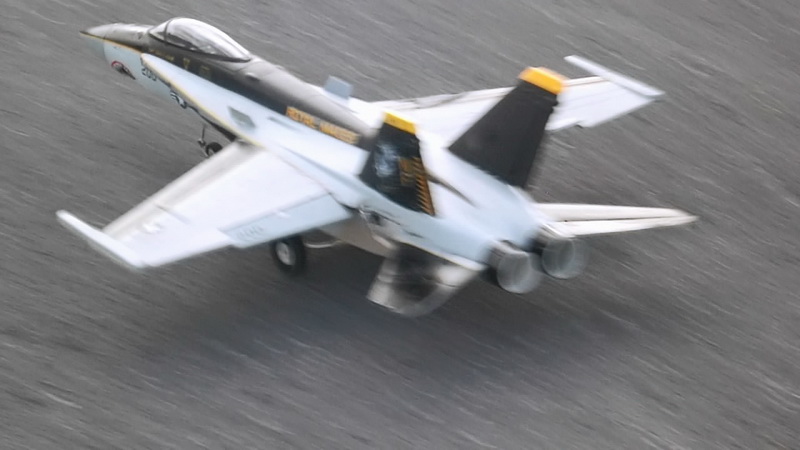
Flight performance
On the first day maiden the plane the wind was a bit breezy on the runway, it took 100% full thrust to get it off from the ground and it does need quite a distance to do that which probably about 22 meters of length. However if it was take-off against 'clean' head wind like at the beach it would probably need around just 15 meters clean ground to take-off at full thrust. One thing for sure if it encounter any ground wind turbulent it seem it seems to rock around like a boat on wavy sea since its a very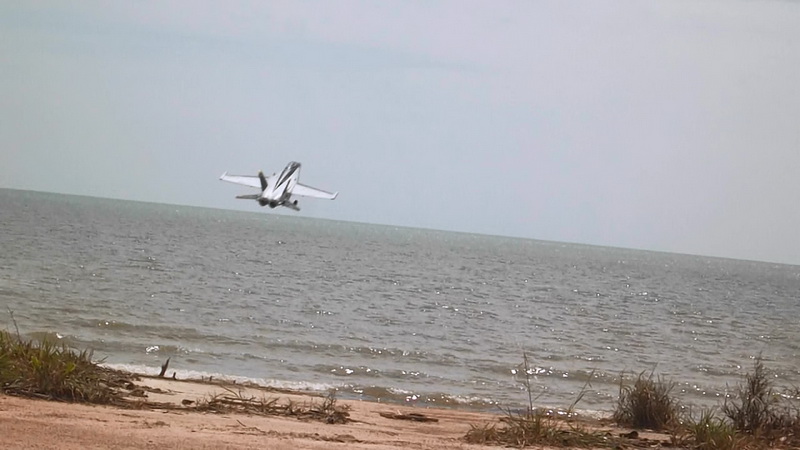 lightweight plane to be toss around by mother nature so a full thrust would stabilized it from rocking about. The control was a bit twitchy as the wind blows the plane around causing it to throw side ways yet since the heaviest part of the plane was the 3s 2200mah battery pack located far below the fuselage CG it give roll stability which keeps the plane upright all the time although it does looks scary as view from the distance. Although flying at 100% full thrust on stock unit the by EDF speed standard it seems to fly slightly slower than average EDF jet speed of the same scale size which is a 50% stark difference between it and my FMS F-18 jet on TORNADO brushless EDF motor which is a rocket. All i can say the speed of HK F-18 is almost equal to the speed of flying my fastest propeller driven warbird the MK-24 SUPERMARINE SPITFIRE. Although it is known that slow speed on EDF jet could lead to stall and crashes however unlike all EDF jet i've flown the HK F-18 seem to able to fly much slower at 50% throttle without dipping it nose down toward the ground....it just leveled naturally with the horizon even if it glide down with zero thrust! Nice! Since i flew a lot on EPP foam type plane this flying trait is indeed very true. In terms of stability in the air it felt more like a glider on natural stabilization as it has virtual 'di-hedral' wings yet without sacrificing nimble-ness and agility. In other words you can relax out away your thumb from the stick for a few second and it will still level nicely by itself for few seconds with wings dipping into stall....well i hardly have any stall on this plane..never.
lightweight plane to be toss around by mother nature so a full thrust would stabilized it from rocking about. The control was a bit twitchy as the wind blows the plane around causing it to throw side ways yet since the heaviest part of the plane was the 3s 2200mah battery pack located far below the fuselage CG it give roll stability which keeps the plane upright all the time although it does looks scary as view from the distance. Although flying at 100% full thrust on stock unit the by EDF speed standard it seems to fly slightly slower than average EDF jet speed of the same scale size which is a 50% stark difference between it and my FMS F-18 jet on TORNADO brushless EDF motor which is a rocket. All i can say the speed of HK F-18 is almost equal to the speed of flying my fastest propeller driven warbird the MK-24 SUPERMARINE SPITFIRE. Although it is known that slow speed on EDF jet could lead to stall and crashes however unlike all EDF jet i've flown the HK F-18 seem to able to fly much slower at 50% throttle without dipping it nose down toward the ground....it just leveled naturally with the horizon even if it glide down with zero thrust! Nice! Since i flew a lot on EPP foam type plane this flying trait is indeed very true. In terms of stability in the air it felt more like a glider on natural stabilization as it has virtual 'di-hedral' wings yet without sacrificing nimble-ness and agility. In other words you can relax out away your thumb from the stick for a few second and it will still level nicely by itself for few seconds with wings dipping into stall....well i hardly have any stall on this plane..never.
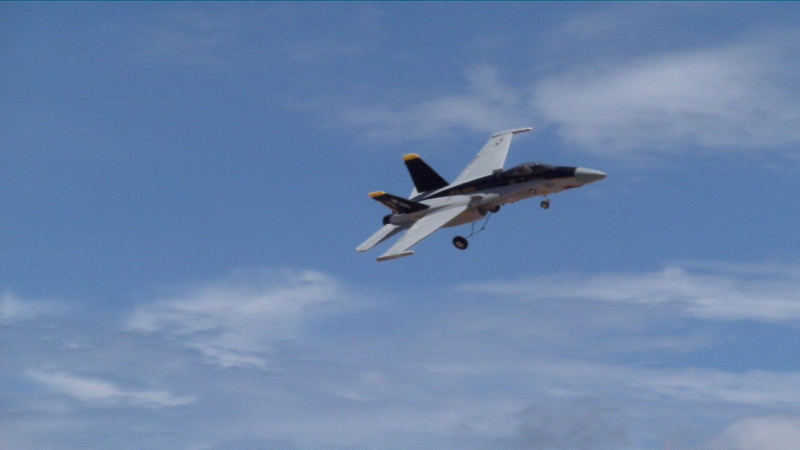
Since it was on maiden flight radio trimming was needed, it just need few click 'up' elevator trim since i'm using much heavier battery pack and that was it!. On stock 30A esc and 6x bladed 64mm EDF unit the thrust as not all powerful nor torquey. Its takes few about 3~4 second to gain speed and get the mass inertia forward. So if i need to do full climbing upwards thrust like rocket launching towards the sky i need to do 'sling shot' maneuver; gain speed on flat horizon first on the first 3 to 4 seconds 100% throttle then i can pull the throttle up leap to vertical rocket maneuver or execute a big loop. However it will gradually lost thrust in just 3 seconds due to lack of thrust to weight ratio and 'U-turn' itself back towards the gravity. Overall its not a rocker or speed breaker plane but being a frugal budget plane it does a great job bring out the fun at the club airfield.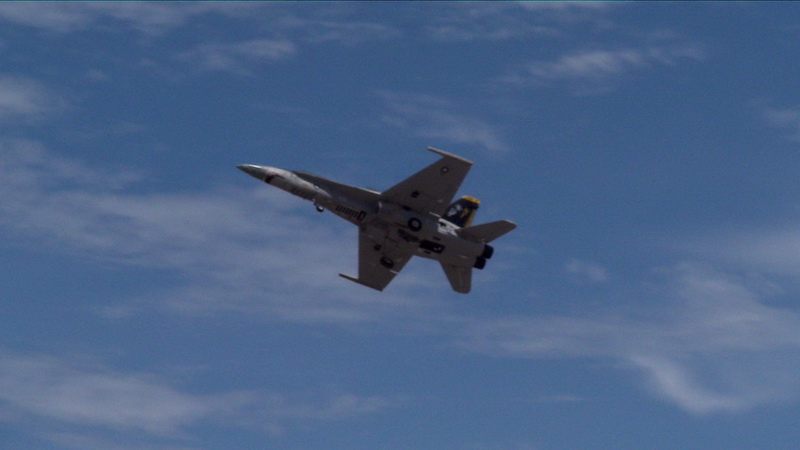
Although lack of thrust (weight to power ratio) the HK -18 shines brighter than other planes interms of being docile, tame, nimble and agile. As for the words 'docile' and 'tame' as mention before i have less struggle on the stick to control it and almost zero stall characteristic even at slow gliding speed....yes it glide nicely. Being nimble and agile; it could perform loops, barrel rolls and low passes without worry about unrecovered stall due to lack of air speed which is number one worries among many R/C pilot. Of course for loops and barrel roll i'll have i need 100% throttle to get full surface control deflection to roll and move on its axis....other than that its all text book maneuvering. However doing barrel roll can be tricky on this plane but not that hazardous compare to other jet planes i own probably because the heaviest part of the plane as described before which is the battery pack is located far bellow the fuselage CG (Center Gravity) line forcing the plane to keep stable at upright position like 'clock pendulum effect'. This 'pendulum' attributes can be a good thing since it a natural stabilization if someone more relaxed on aileron control but not a good thing for those who love 'on demand' nimble and aerobatic performance especially when doing inverted flight which is a bit harder.....there is this "fight to control!" when the plane is flown inverted. Which is why you seldom see me flying inverted on HK F-18 on my Youtube video. The only moments i can do 'thurst-less' barrel roll is when the plane pointed downwards towards the gravity since the wing axis CG at that point has neutral gravity effect on the battery weight placement.....that only happens after i exit from high altitude big loop maneuver. Overall with my skills all stunts and aerobatic maneuver on HK F-18 it is like 'a walk in the park'.
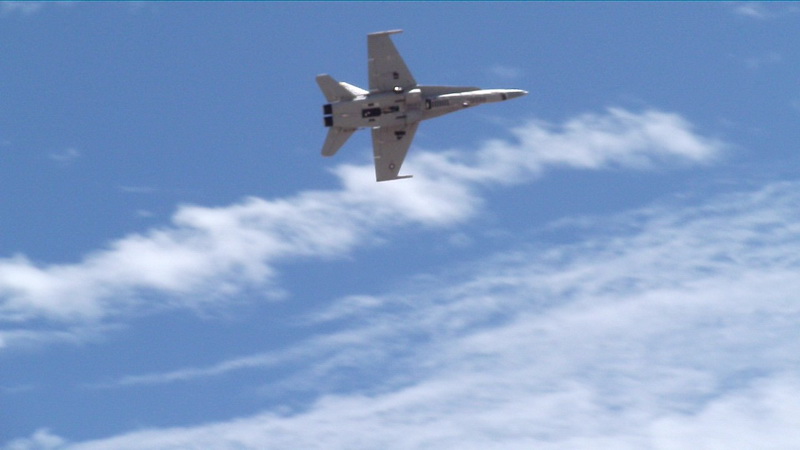
When it comes to landing i notice this plane can easily do a 'flared' landing (Landing Flare method) than my other jet plane to slow down pace without taking too much distance but taking off is completely the opposite. In the flare, the nose of the plane is raised, slowing the descent rate and therefore creating a softer 'rear landing gear first' touchdown. On this HK's F/A F-18 it can have nose higher than usual AOA (Angle of Attack) during landing to 'flare' and results the whole wing acted like a huge flaps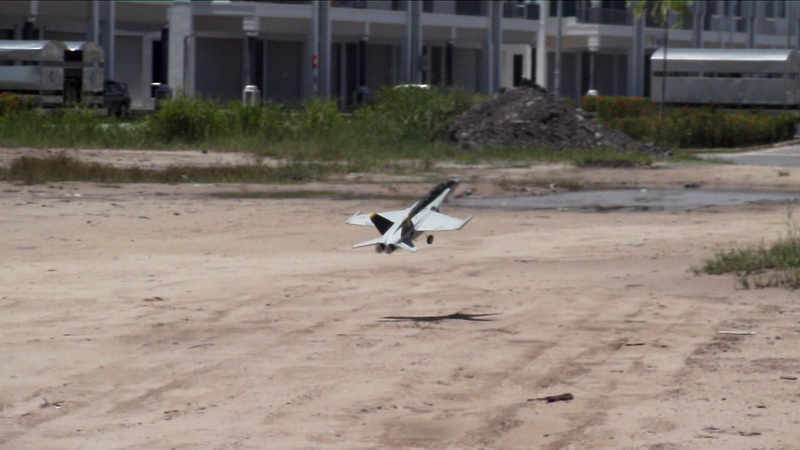 angle to slow down without stalling. At this angle it offer very close to 'air braking' since the whole surface under the wings exposed huge amount of air friction to slow down the plane. However 'landing flare' only works at proper timing a few seconds and millimeters from touch down ideally when approached at hot landing speed to gain inertial momentum then suddenly hit the 'flare' like parachute. At certain time if i can get it right i could land with just 3 meters worth of 'touch down' distance to land regardless of wind or windless condition. One of the obvious reason why it could land at shorter distance is because with with full total flying weight of 640 gram plane + 126 gram 3s 2200mah 35~40C li-po battery the plane still far lighter than average weight of an EDF plane of similar size thus less 'inertial momentum' weight to land. Btw i can land my Pitt Special just only 1 meters or on good windy day just 0 (Zero) distance aka V-TOL land......yeah! i had it on my Youtube video if you want to watch it. To sum up about the landing its up to the pilot skills to determine how to land this plane because this F/A-18 can have many hidden yet undiscovered surprises like '101 ways to land a plane'...so its very docile when it comes to landing.
angle to slow down without stalling. At this angle it offer very close to 'air braking' since the whole surface under the wings exposed huge amount of air friction to slow down the plane. However 'landing flare' only works at proper timing a few seconds and millimeters from touch down ideally when approached at hot landing speed to gain inertial momentum then suddenly hit the 'flare' like parachute. At certain time if i can get it right i could land with just 3 meters worth of 'touch down' distance to land regardless of wind or windless condition. One of the obvious reason why it could land at shorter distance is because with with full total flying weight of 640 gram plane + 126 gram 3s 2200mah 35~40C li-po battery the plane still far lighter than average weight of an EDF plane of similar size thus less 'inertial momentum' weight to land. Btw i can land my Pitt Special just only 1 meters or on good windy day just 0 (Zero) distance aka V-TOL land......yeah! i had it on my Youtube video if you want to watch it. To sum up about the landing its up to the pilot skills to determine how to land this plane because this F/A-18 can have many hidden yet undiscovered surprises like '101 ways to land a plane'...so its very docile when it comes to landing.
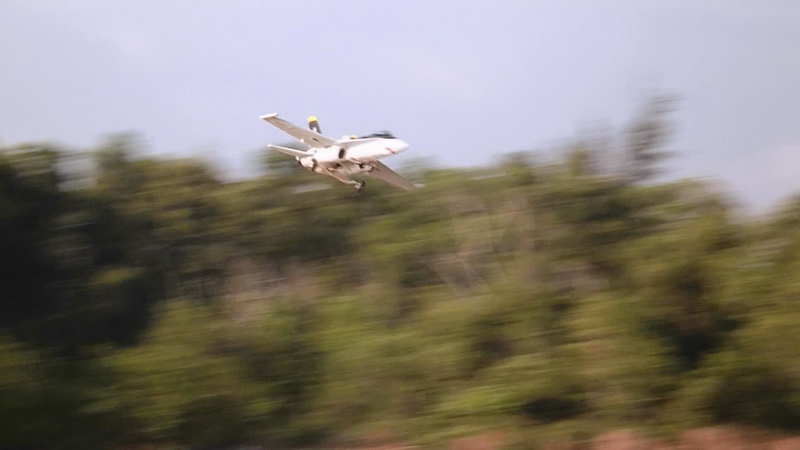
On the air the required minimal cruise speed on windless day should be at 70% throttle stick. Anything between 55%~65% make the plane looks like its not moving at all or suspended in the air in windy condition because it will float slowly and get pushed in reverse by heavy wind. Stall speed is when it below 50% throttle stick but worry not it just glide down like a glider than harsh side stall as long the nose are pointed downward a bit regardless at zero (0%) throttle. This plane ideally best flown when the wind condition is between 0 to 12 Knots just to enjoy normal flight and perform great aerobatic maneuver without struggle to control. Anything above 12 Knots this plane will give you some hard time 'fight to control' against mother nature's windy turbulent. In term of public safety; there no way this plane could break a house window glass pane or car wind shield should it crash head on because the plane is way too lightweight and more likely to shatter its own foamy fuselage than breaking someone property. The inertial impact factor is extremely low to cause any public property damages which is why its an ideal plane for park flying in public space.
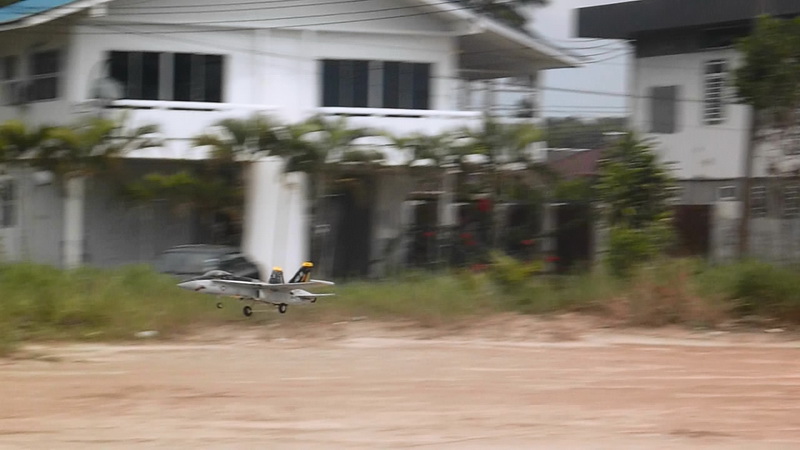
When in comes to fun and social factor this plane delivers all your requirements to have fun along with other jet plane at club field. It can match any speed with any stock park ffyer size EDF jet at club field especially if you want to fly formation pattern or simply do some chase or dog fight with other R/C pilots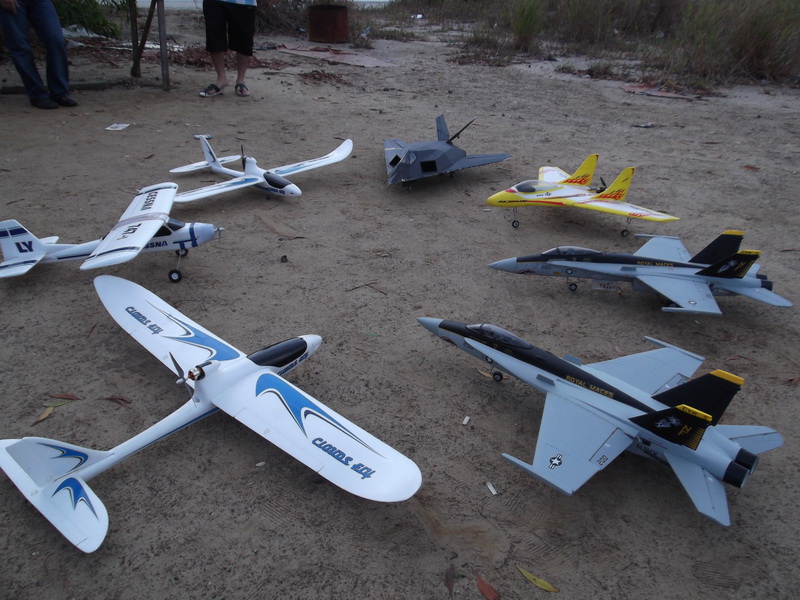 EDF jets in the open air. Even if your flying buddy flies a propeller plane or a glider the HK's F/A-18 can fly pretty slow to match the same speed with non-EDF jet and have fun doing tandem flight or even just doing gliding or slope soaring against the head wind since its build to be the lightest EDF jet in the market to float around. Overall this F/A-18 is a multipurpose plane that suits any flying style to meet any social meeting requirements. One thing for sure everytime i fly this plane i would always have that moment of "Wow!! I did it! Cool! " remarks keeps me going back for more on this F-18 panel. You can just do many crazy stunts without any risk....zero fear!
EDF jets in the open air. Even if your flying buddy flies a propeller plane or a glider the HK's F/A-18 can fly pretty slow to match the same speed with non-EDF jet and have fun doing tandem flight or even just doing gliding or slope soaring against the head wind since its build to be the lightest EDF jet in the market to float around. Overall this F/A-18 is a multipurpose plane that suits any flying style to meet any social meeting requirements. One thing for sure everytime i fly this plane i would always have that moment of "Wow!! I did it! Cool! " remarks keeps me going back for more on this F-18 panel. You can just do many crazy stunts without any risk....zero fear!
In terms of transporting and handling the plane around this is definitely the most portable EDF jet plane to move about. Even holding it just grasp by the palm of your hand or few finger was enough due to being extremely lightweight. You don't necessary have to tuck the plane under your arm like many park flyer size plane to support/carry it. The only issues to be caution when moving around the plane is beware not to knock the wing tips where it had that missile railing since its made from fragile EPS foam. Also its quite easy to hang on the wall by hooking via front steering landing gear since its light enough not causing to tear the landing gear out from its foamy fuselage.
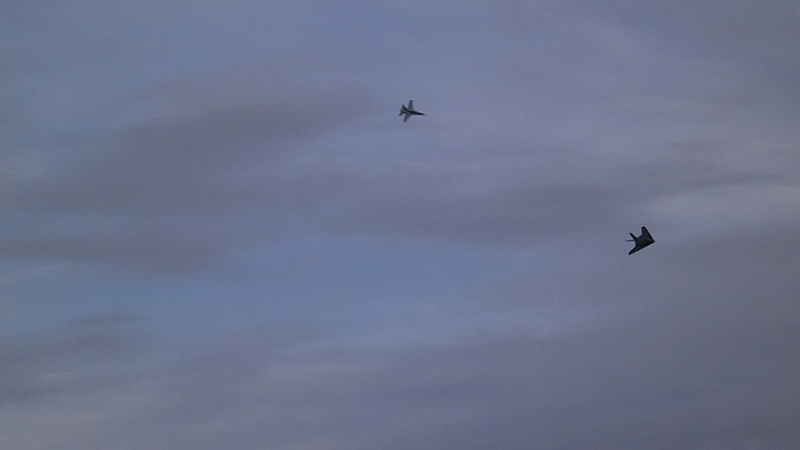
Aesthetic value
Obviously this HK's FA-18 HORNET is not going to win any beauty contest on any terms if it requires to meet scale replica standard of an actual military FA-18 jets. The plane looks good and  cool to look it once in the air performing all those cool maneuver. But once landed to see it close up it just another normal budget park flyer jet all foam on thin steel stilts landing gear. When comparing side by side with plastic scale model of FA-18 replica the aesthetic appealing on this R/C jet is too far out to be a shelf queen plane. If you're looking at some 'close' to realistic replica R/C model of this jet best bet you should find bigger plane with at least 70mm to 90mm EDF duct unit on 5~6S li-po battery pack with 8~12 servos for flight controls since it usually comes with bigger fuselage that can display more detailed aesthetics on board such as realistic landing gears, flaps, cockpit, lights, airbrakes, rudder, thrust vectored (for latest release), detailed panels and pitot tubes as found on brands such as FMS, LAN XIANG, BANANA HOBBYand FREEWING. ....my SUKHOI SU-47 BERKUT has parachute brake landing! With all those good aesthetics on bigger planes however based on my experience they are a bit hassle to transport, cumber some maintenance, expensive to setup, limited space to fly and by the time you get ready to fly with all those preparation the fun of flying a big plane started to deteriorate because of mental exhaustion to prep things up before flying. Yeah i know the HK F-18 won't win any fashion contest but it wins an aerobatic show indeed. Airshow matters!
cool to look it once in the air performing all those cool maneuver. But once landed to see it close up it just another normal budget park flyer jet all foam on thin steel stilts landing gear. When comparing side by side with plastic scale model of FA-18 replica the aesthetic appealing on this R/C jet is too far out to be a shelf queen plane. If you're looking at some 'close' to realistic replica R/C model of this jet best bet you should find bigger plane with at least 70mm to 90mm EDF duct unit on 5~6S li-po battery pack with 8~12 servos for flight controls since it usually comes with bigger fuselage that can display more detailed aesthetics on board such as realistic landing gears, flaps, cockpit, lights, airbrakes, rudder, thrust vectored (for latest release), detailed panels and pitot tubes as found on brands such as FMS, LAN XIANG, BANANA HOBBYand FREEWING. ....my SUKHOI SU-47 BERKUT has parachute brake landing! With all those good aesthetics on bigger planes however based on my experience they are a bit hassle to transport, cumber some maintenance, expensive to setup, limited space to fly and by the time you get ready to fly with all those preparation the fun of flying a big plane started to deteriorate because of mental exhaustion to prep things up before flying. Yeah i know the HK F-18 won't win any fashion contest but it wins an aerobatic show indeed. Airshow matters!
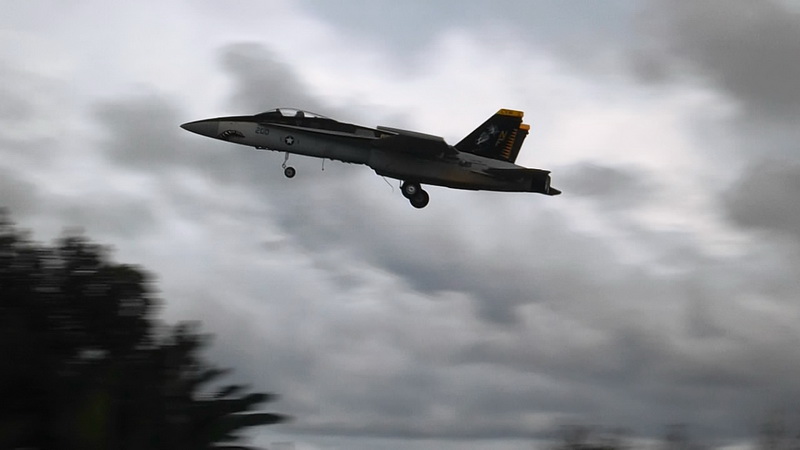
Videos/Medias![]() Here are sample of video of i posted on my Youtube channel contain fun flying my Hobby King - F/A-18 HORNET
Here are sample of video of i posted on my Youtube channel contain fun flying my Hobby King - F/A-18 HORNET
- Product gallery (mixed with my other planes): HOBBY KING F/A-18 Hornet 64mm EDF jet - 686mm
Vendor/seller
Here are list of reputable vendor/seller which i bought from and also verified by community forum discussion groups. Also i've experienced buying from these places that have good support and services:
1. Seller HobbyKing.com: F-18 EDF Plug-n-Fly RC Jet *(discontinued production model)
Support group/articles:
Places where you can find help and resources related to this product:
RCgroups discussion group - HobbyKing/Art-Tech F/A-18 Hornet mod thread: https://www.rcgroups.com/forums/showthread.php?1286964-HobbyKing-Art-Tech-F-A-18-Hornet-mod-thread
Actual real aircraft information 1: https://en.wikipedia.org/wiki/McDonnell_Douglas_F/A-18_Hornet
Actual real aircraft information 2: https://www.boeing.com/defense/fa-18-super-hornet/
Actual real aircraft information 3: https://www.airforce-technology.com/projects/fa18/
Actual real aircraft information 4: https://fas.org/man/dod-101/sys/ac/f-18.htm
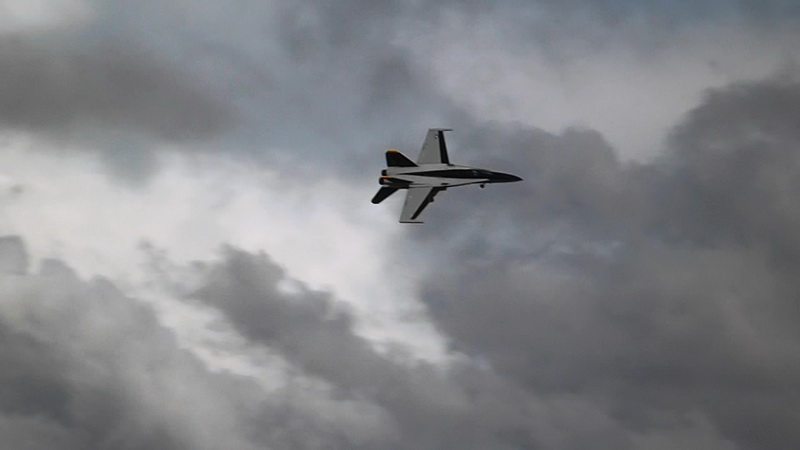
Summary
Through the years i have accumulated great amount joy and exciting experience flying this Hobby King aka ART-TECH F/A-18 EDF jet because of its flying attributes replicates realistic flight of actual jet maneuver that give out impression; "Wow! it flies like a real jet fighter!". Every time i finished rounds of flight it always give me the satisfaction of the day, especially when i get to witness great photogenic moments as i executes coolest maneuver ever. This is the jet plane that always makes a great story telling worthy to be told and told again among R/C flying enthusiast. Today i got collection of videos and photography shots of myself flying my F/A -18 on my hard disk and also on this website thus some became my desktop wallpaper too. Not only its fun 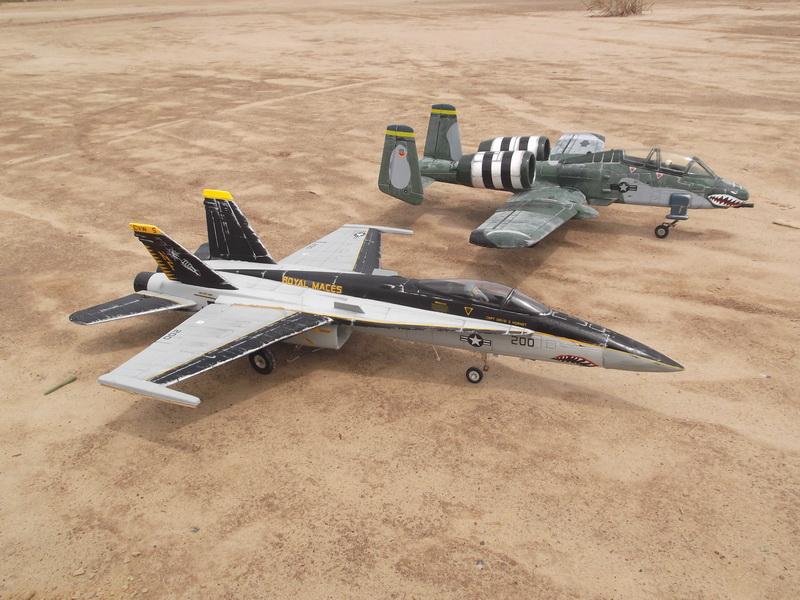 to fly but also a great social plane to be around with people who are on the same page among R/C flying club and people who love a great jet airshow since this plane have less effort to prepare and money to start with.
to fly but also a great social plane to be around with people who are on the same page among R/C flying club and people who love a great jet airshow since this plane have less effort to prepare and money to start with.
Unlike the HK's A-10 WARTHOG where it could do insane aerobatic maneuverability the HK F/A-18 however it retains the original thrills of flying a realistic jet 'non-exaggerated' maneuver like full thrust climbing, speed dive, rolls and loops just how it was portrayed in actual jet airshow scene in real world. Although it fall shorts for its realistic physical aesthetic and appearance but it does offer more quality flight without sacrificing to much budget to enter into EDF jet scene. Unfortunately this particular HK brand models production started to decline starting from 2014 and by 2016 cease to exist which makes it hard to purchase. However i was lucky to own 2x planes which i purchased at interval 1 month after the first unit because i love the fun quality experience i had with the first HK F/A-18 HORNET. Wait!!!! Before you shed those tears hear this...fortunately this F/A-18 mode still exist in the market as old stock under ART-TECH brand but at much higher price. But on the flip side they are hard to find because not many online seller would post older stock but rather hidden away in dusty brick and mortar shop. They do appear in Ebay, flea Bay, Craigslist's, Amazon or sometimes an independent sole websites but you'll need to work out those Google searching skills. So if you love this plane then start searching through rubbles debris of internet sites, who know you might find this gem hidden away from the search engines.

By year 2020 both of my HK F/A-18 which is about 9 years old after i had still remain active to fly every weekends. However since it has been through cycles of take-off and landing the EPS foam rear bottom fuselage that holds the battery bay and rear landing gear started to deformed, cracked and deteriorate due to repeated stress load. I had a hunched it maybe able to hold up for another 3 years worth of flight though but for the last 9 years it was a worthy plane since it has carved me a sweet nostalgic memories and a great lesson what it takes to be a great R/C pilot. Lastly three words i can describe for my HK F-18 HORNET EDF jet; its 'FUN', 'DOCILE' and 'AFFRODABLE' plane. With those said reason this why i love to fly a park size jets especially the HK F-18; the plane just quickly go and make some cool action stunts! Fly and impressed!...and the crowds go 'WOW!!..free airshow everyone!!' *clap!*, *clap!*. I can see those jaw dropping face of the spectator as i execute loops, barrels, spins and oh yes! an 'Immelman turn!' tricks! Its always obvious after landing by standers would gather flock around it with question, enthusiasms and compliments! That's the best part about R/C flying....bring dreams, hopes, skills and inspiration not only for me as an R/C pilot but also for those who witness it. My HK F-18 HORNET EDF jet amplifies thaat kind of experience of flying!.....when i did that "Did you see that?! Awesomeness!!!" it just shows you earn badges for such skills. Always bring smile to my face and last for week or even years! Jet plane for life yo!!
that holds the battery bay and rear landing gear started to deformed, cracked and deteriorate due to repeated stress load. I had a hunched it maybe able to hold up for another 3 years worth of flight though but for the last 9 years it was a worthy plane since it has carved me a sweet nostalgic memories and a great lesson what it takes to be a great R/C pilot. Lastly three words i can describe for my HK F-18 HORNET EDF jet; its 'FUN', 'DOCILE' and 'AFFRODABLE' plane. With those said reason this why i love to fly a park size jets especially the HK F-18; the plane just quickly go and make some cool action stunts! Fly and impressed!...and the crowds go 'WOW!!..free airshow everyone!!' *clap!*, *clap!*. I can see those jaw dropping face of the spectator as i execute loops, barrels, spins and oh yes! an 'Immelman turn!' tricks! Its always obvious after landing by standers would gather flock around it with question, enthusiasms and compliments! That's the best part about R/C flying....bring dreams, hopes, skills and inspiration not only for me as an R/C pilot but also for those who witness it. My HK F-18 HORNET EDF jet amplifies thaat kind of experience of flying!.....when i did that "Did you see that?! Awesomeness!!!" it just shows you earn badges for such skills. Always bring smile to my face and last for week or even years! Jet plane for life yo!!
